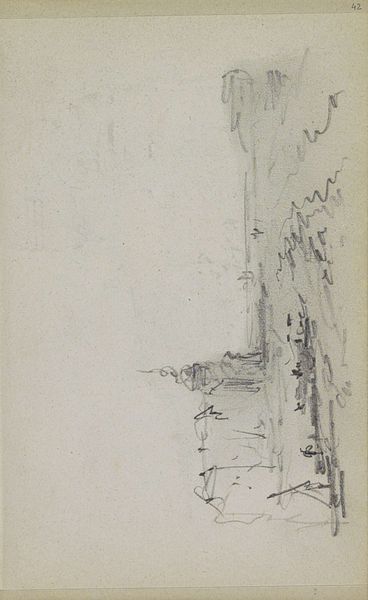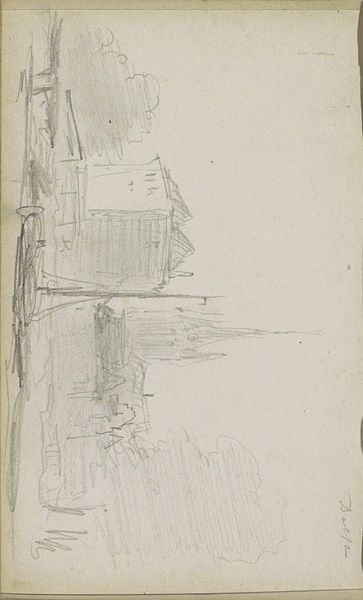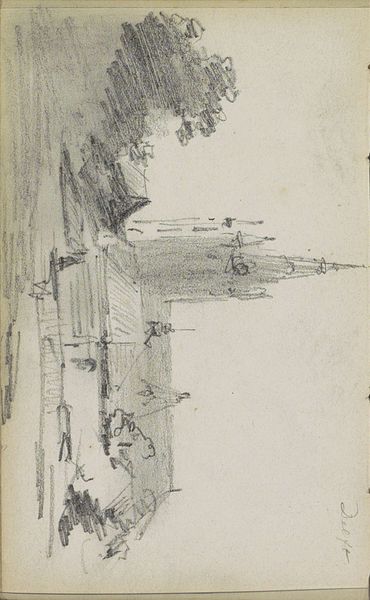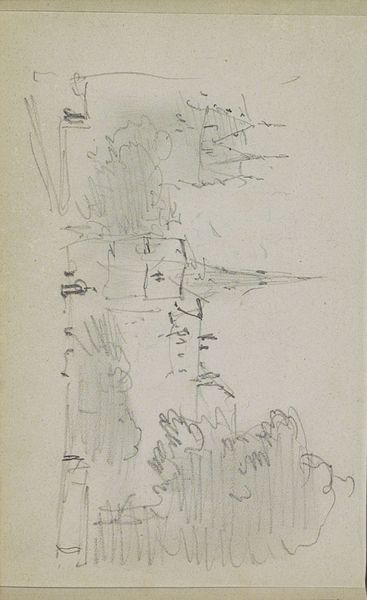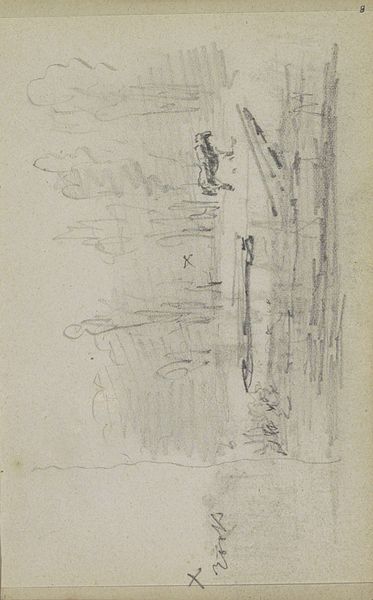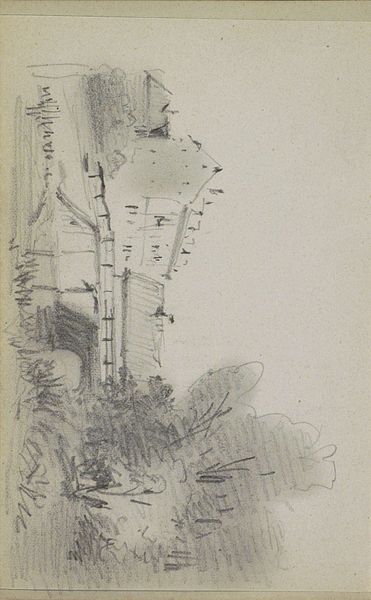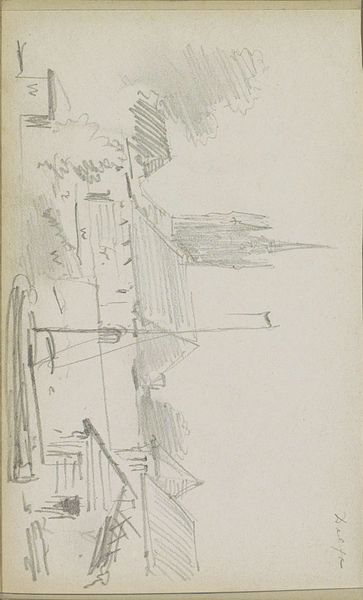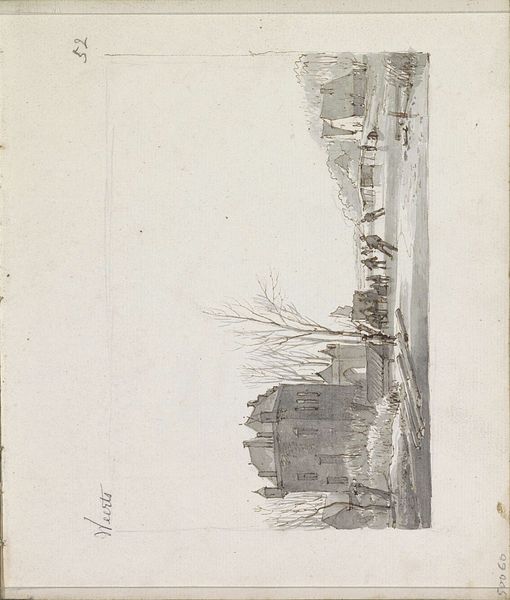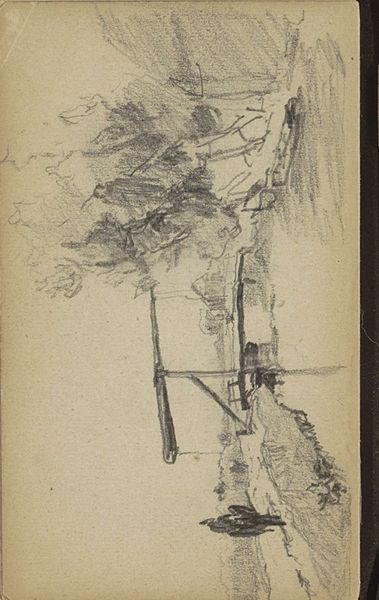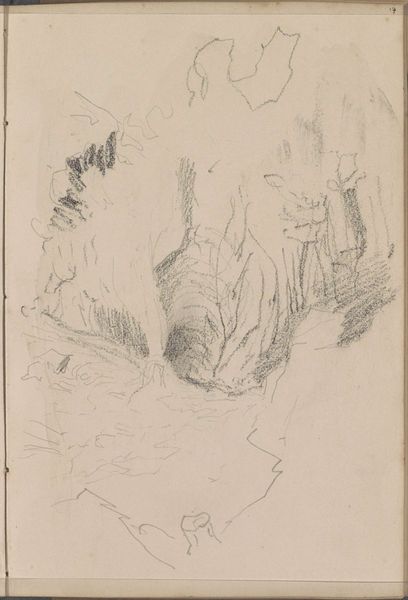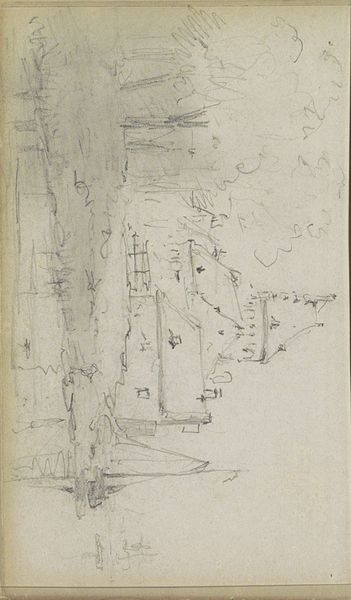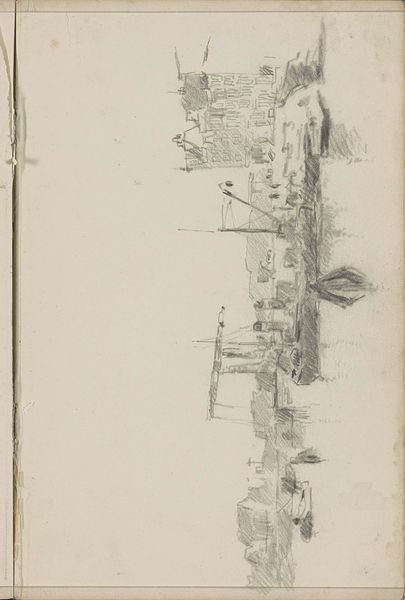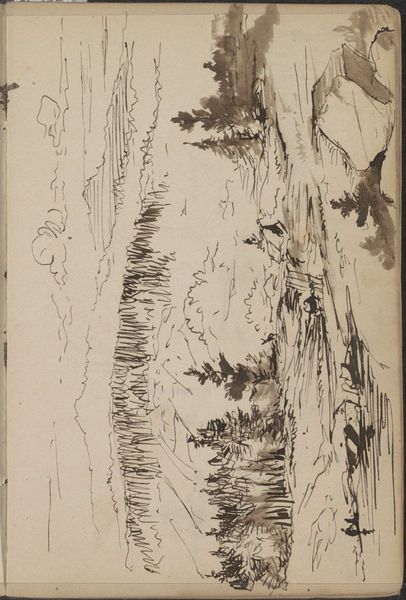
drawing, watercolor, pencil
#
drawing
#
landscape
#
river
#
charcoal drawing
#
oil painting
#
watercolor
#
pencil
#
watercolor
Copyright: Rijks Museum: Open Domain
Curator: Before us, we have Johannes Tavenraat’s “Eikenhout aan de Rotte,” a work created between 1864 and 1867, currently held in the Rijksmuseum collection. It is composed of graphite, pencil and watercolor on paper. Editor: It strikes me as something sketched rapidly, capturing a transient moment with its muted tones and visible pencil work. It feels… immediate, in a way. Curator: Exactly. Tavenraat used readily available materials – graphite, pencil, watercolor– all quite portable and inexpensive. Consider the accessibility of landscape art for the burgeoning middle class at that time. These weren't commissioned portraits of nobility, but reflections of everyday life and accessible nature, reflecting their social milieu and their growing cultural power. Editor: And how might the Rotte river, depicted in this work, function symbolically? As a source of life? A transport route? Considering the environmental impact of waterways back then, the landscape wasn't merely scenery but tied to the livelihood and challenges of those living nearby, isn’t it? Curator: Certainly. Think about the Dutch landscape tradition itself –its deep relationship with water management and land reclamation. The making of the Dutch landscape is as much cultural as it is natural, so an image like this shows the relationship between land and the society of the time. Also, note the application of the washes; Tavenraat doesn’t hide his method at all. Editor: What kind of politics did Tavenraat subscribe to? Curator: As he moved through the Dutch landscape to paint it, and his choice of commonplace subject matter reveals something of a shift in the art market, as the value given to this kind of representation started growing in popularity. These pieces made art ownership far easier for families outside of noble classes. Editor: Seeing this sketch, the interplay between nature and human influence comes to mind. A simple work becomes richer with context. Thank you for untangling those details! Curator: It’s my pleasure. These kinds of paintings become mirrors reflecting Dutch identity as much as landscapes, when they're contextualized appropriately.
Comments
No comments
Be the first to comment and join the conversation on the ultimate creative platform.
